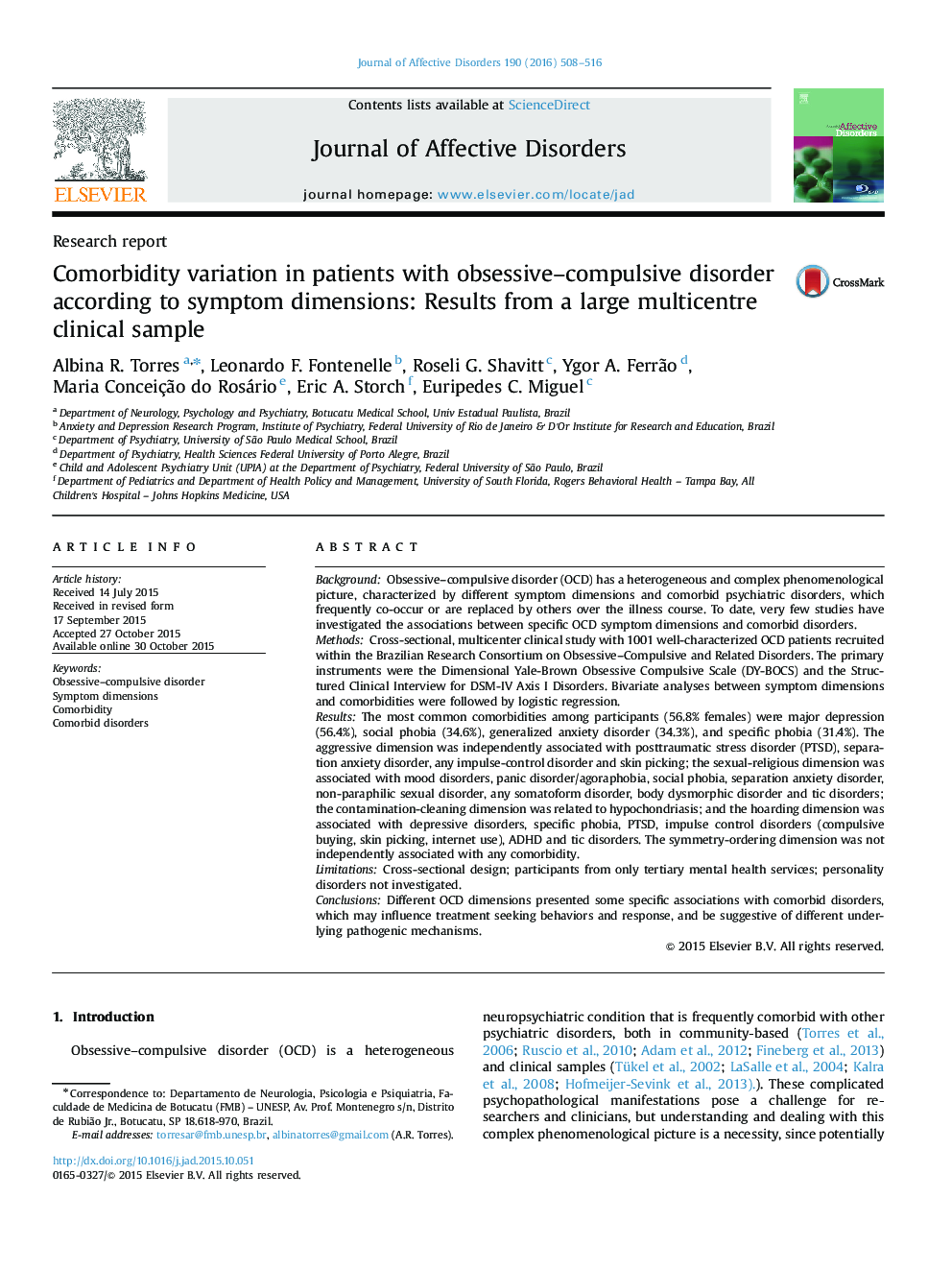| کد مقاله | کد نشریه | سال انتشار | مقاله انگلیسی | نسخه تمام متن |
|---|---|---|---|---|
| 6230774 | 1608135 | 2016 | 9 صفحه PDF | دانلود رایگان |

• OCD dimensions present some specific associations with comorbid disorders.
• The aggressive dimension predicted PTSD, separation anxiety, impulse-control disorders and skin picking.
• The sexual-religious dimension predicted mood and anxiety disorders, non-paraphilic sexual disorder, BDD and tic disorders.
• The contamination-cleaning dimension predicted hypochondriasis.
• The hoarding dimension predicted depression, specific phobia, PTSD, impulse control disorders, ADHD and tic disorders.
• The symmetry-ordering dimension was not independently associated with any comorbidity.
BackgroundObsessive–compulsive disorder (OCD) has a heterogeneous and complex phenomenological picture, characterized by different symptom dimensions and comorbid psychiatric disorders, which frequently co-occur or are replaced by others over the illness course. To date, very few studies have investigated the associations between specific OCD symptom dimensions and comorbid disorders.MethodsCross-sectional, multicenter clinical study with 1001 well-characterized OCD patients recruited within the Brazilian Research Consortium on Obsessive–Compulsive and Related Disorders. The primary instruments were the Dimensional Yale-Brown Obsessive Compulsive Scale (DY-BOCS) and the Structured Clinical Interview for DSM-IV Axis I Disorders. Bivariate analyses between symptom dimensions and comorbidities were followed by logistic regression.ResultsThe most common comorbidities among participants (56.8% females) were major depression (56.4%), social phobia (34.6%), generalized anxiety disorder (34.3%), and specific phobia (31.4%). The aggressive dimension was independently associated with posttraumatic stress disorder (PTSD), separation anxiety disorder, any impulse-control disorder and skin picking; the sexual-religious dimension was associated with mood disorders, panic disorder/agoraphobia, social phobia, separation anxiety disorder, non-paraphilic sexual disorder, any somatoform disorder, body dysmorphic disorder and tic disorders; the contamination-cleaning dimension was related to hypochondriasis; and the hoarding dimension was associated with depressive disorders, specific phobia, PTSD, impulse control disorders (compulsive buying, skin picking, internet use), ADHD and tic disorders. The symmetry-ordering dimension was not independently associated with any comorbidity.LimitationsCross-sectional design; participants from only tertiary mental health services; personality disorders not investigated.ConclusionsDifferent OCD dimensions presented some specific associations with comorbid disorders, which may influence treatment seeking behaviors and response, and be suggestive of different underlying pathogenic mechanisms.
Journal: Journal of Affective Disorders - Volume 190, 15 January 2016, Pages 508–516